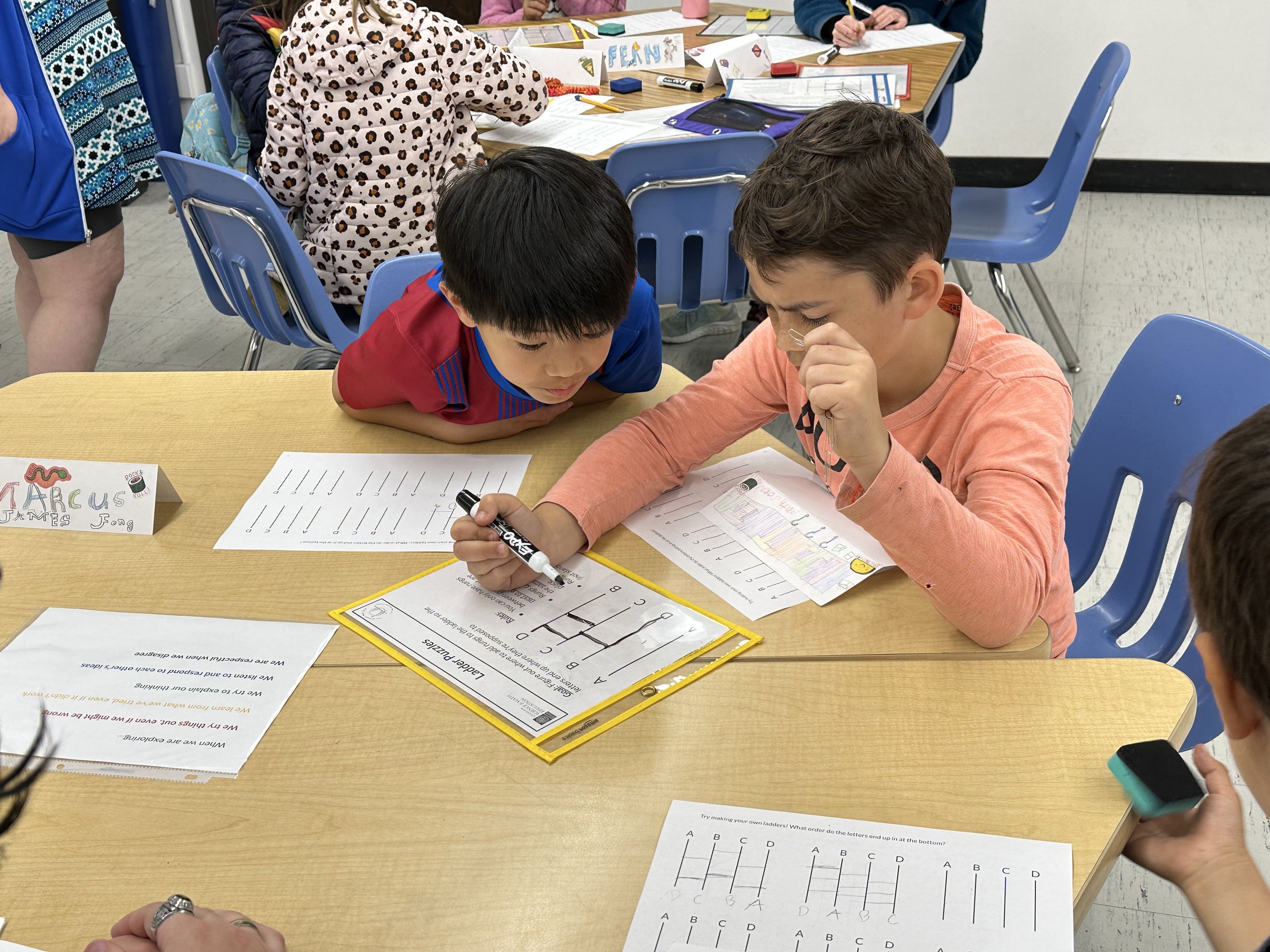Ladder Puzzles
How it works
This activity involves "ladders" that look a little different than the ones we're used to. Each ladder has a set of posts (vertical lines) and rungs (horizontal lines between adjacent posts). Letters climb down the posts, and when they reach a rung, they must turn and cross that rung to the other post, then continue climbing down. Usually, the letters end up in a different order at the bottom of the ladder than at the top!
In a ladder puzzle, you're given the order the letters are supposed to be in at the bottom of the ladder, and your goal is to figure out where to put the rungs so the letters end up where they're supposed to.
In this activity, students learn about ladders and practice tracing the paths of the letters on different ladders. Then they are given specific ladder puzzles to try to solve. They explore which puzzles require the most rungs (and how many rungs these puzzles require).
Why we like this activity
It’s fun! Students enjoy exploring ladders and solving ladder puzzles.
It helps students develop algorithmic reasoning.
It requires students to engage in mathematical habits of mind:
Finding and using strategies to solve the puzzles using as few rungs as possible
Using logic when trying to determine the minimum number of rungs that are required to solve a puzzle
It has a low floor and a high ceiling: Students can get started exploring ladders and solving ladder puzzles by trial and error, but there is a lot to explore and discover.









